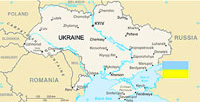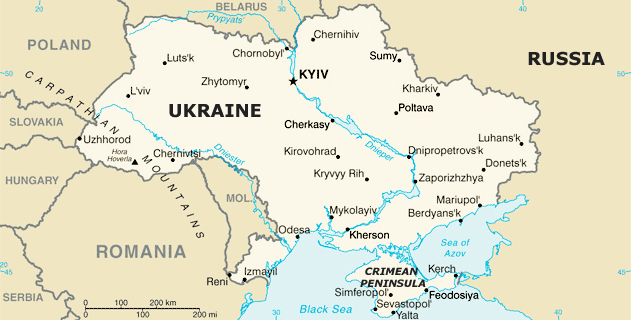FINLAND AND ITS LESSONS FOR UKRAINE

(by Kirk Bennett)
Kirk Bennett is a former Foreign Service Officer who served in both Moscow and Kyiv. The opinions and characterizations in this piece are those of the author, and do not necessarily represent official positions of the United States Government.
Since the outbreak of the Ukraine crisis, and with increasing vehemence as the crisis has deepened, thoughtful people in both Russia and the West have called for urgent, high-level negotiations among Moscow, Washington and Brussels. These calls have generally included the outlines of a grand compromise that would presumably satisfy the core interests of both Russia and the West. One key element of seemingly every plan is the renunciation of NATO membership for Ukraine and the country’s Finlandization. In view of the popularity of this concept, it is worth taking a closer look at the historical model of Finlandization to see how it might usefully apply to Ukraine.
It is important to keep in mind that Finland was Finlandized by the Finns. Finlandization was not the product of some East-West agreement, nor even a topic of negotiations. Rather, it was a free choice by the Finns themselves – a gamble that ultimately paid off well for them during the Cold War.
However, it is no less important to recall that Finlandization did always work. Finland was already Finlandized in 1939, in the sense that the country was scrupulously neutral and presented no plausible security threat to any of its neighbors. That fact did not save Finland from invasion by the Soviet Union, and it was only Finland’s fierce resistance in the Winter War that spared it from becoming the 16th Soviet republic.
Why, then, did Finlandization work well during the Cold War when it had failed so spectacularly in 1939-40?
During the Winter War the Soviet Union had a completely free hand. With World War II already under way, none of the major powers had any attention or resources to spare for Finland; Germany, in fact, had expressly written Finland off in the Molotov-Ribbentrop Pact. During the Cold War confrontation, on the other hand, Moscow had to be careful not to drive Finland into the camp of the USSR’s adversaries. Both during the Cold War and after, Finns have retained the option to join NATO, which has given them considerable leverage in dealing with Moscow.
Another very much underappreciated element of the post-1945 success of Finlandization is the fact that, at some imperceptible point between 1939 and 1945, Moscow accepted Finnish independence as an accomplished fact. No more was Finland to be viewed as a temporarily separated fragment of historical Russia. If in 1939 Moscow created the puppet Terijoki Government as a prelude to Finland’s complete absorption, in 1944-45 there was no attempt even to Sovietize Finland, let alone annex it. The extension of Moscow’s rule to the Gulf of Bothnia had simply become a bridge too far.
Before applying these lessons to the current crisis in Ukraine, it is important to underscore one important fact that most proponents of Ukraine’s Finlandization appear to have missed: prior to the appearance of the famous little green men in Crimea, UKRAINE HAD ALREADY BEEN FINLANDIZED.
Sure, various Ukrainian governments had dabbled, with varying degrees of seriousness, with NATO. However, even the Orange euphoria after 2005 had failed to generate much enthusiasm among Ukrainians for NATO membership. At its height, the percentage of Ukrainian support for NATO membership struggled to breach the mid-twenties, and for the past five years or so had wallowed in the mid-teens. Even solid-orange Halychyna could not muster a pro-NATO majority.
In light of this persistent fact, both Ukrainians and the West had accepted Yanukovych’s 2010 law on Ukraine’s non-bloc status. Washington and Brussels mouthed niceties about the alliance’s open door and the prospect that Ukraine would “one day” join. However, beset with “Ukraine fatigue” and having bigger security fish to fry elsewhere, the West was doing nothing to hasten that day.
Let no one imagine that Yanukovych’s ouster introduced any substantive change into this equation. The Maidan was emphatically NOT about Ukraine joining NATO, but about the country drawing closer to Europe, up to and including eventual EU membership. There is no reason to believe that this movement toward the EU would have entailed NATO membership for Ukraine any more than it has for Finland – another appropriate lesson to draw from the historical experience of Finlandization.
(Parenthetically, there is EVERY reason to believe that any post-Yanukovych government would have tried to revisit the 2010 Kharkiv Accords that extended the lease of the Russian Black Sea Fleet in Sevastopol until 2042. However, such a move would have had nothing to do with NATO and is outside the scope of an essay on the lessons of Finlandization.)
The pre-2014 Finlandization of Ukraine has been destroyed not by Western machinations or some purported upwelling of Ukrainian fascism, but by Russia’s own actions. Yes, the Ukraine crisis has spawned the worst downturn in Russia-West relations in decades, but at its heart it remains a conflict between Russia and Ukraine. It is in this context that Finlandization offers some useful lessons.
Arrogant, self-important Westerners that we are, we insist on imagining that a) it’s all about us; and b) we can fix other people’s problems. How comforting to believe that we can resolve the Ukraine crisis simply by taking into account “legitimate Russian grievances,” by acknowledging “historical rights,” by accepting a Russian sphere of privileged interests in the post-Soviet space! But it’s not all about us, and we have to resist any inclination to believe we can sit down with the Russians and cut a deal over the heads of the Ukrainians – if not out of moral scruples, then due to the purely practical consideration that such an approach would fail.
As one practical matter, how do you now convince the Ukrainians to accept neutrality? If Russia brushed aside other solemn obligations like the Budapest Memorandum and various bilateral agreements in violating Ukrainian sovereignty, then why should another “scrap of paper,” blessed by the West and implemented by Kyiv but potentially ignored by Moscow at any convenient time, stand in the way of future Russian depredations?
Moreover, as we have seen, Russian alarm at Yanukovych’s ouster was not, and could not have been, due to any near-term prospect of Ukraine joining NATO. Rather it was the recognition that a Ukrainian turn toward Europe – even without EU membership – would be a watershed event sounding the death knell for Russia’s own ambitious reintegration plans in the post-Soviet space. And if Ukrainian NATO ambitions were not the real trigger for Russia’s intervention, then having Kyiv renounce any NATO aspirations would hardly fix the problem.
To conclude, the Finlandization paradigm offers some excellent guidance for resolving the current crisis in Ukraine:
1) Finlandization must be voluntary and not dictated by outsiders.
2) Moscow must not be allowed to have a free hand vis-à-vis Kyiv, or Finlandization will not work as intended – indeed, it would be counterproductive. Finland has not had to renounce NATO membership in order to be Finlandized, and neither should Ukraine.
3) Finlandization of Ukraine must entail genuine Russian recognition of Ukrainian sovereignty. Just as Finnish resistance during the Winter War dissuaded Moscow from a policy of absorption, so the mass Ukrainian rejection of Moscow’s “Novorossiya” project could begin to shape Russian thinking to understand Ukrainian independence not as a temporary historical accident, but as a geopolitical fact of life.
The obvious course for Russia in a Finlandization scenario would be to accept, however grudgingly, Ukraine’s freedom to choose its own course, while acting to ensure that Ukrainians never feel compelled to exercise the NATO option. Such a policy would have maintained Ukraine’s prior Finlandization even after Yanukovych’s overthrow, and still represents the best hope for pulling both Ukraine and Russia out of their present downward trajectory.
The key to success, of course, is to be true to the historical example. Unfortunately, when some analysts pronounce the word “Finlandization,” it comes out sounding rather more like “Munich” instead.

